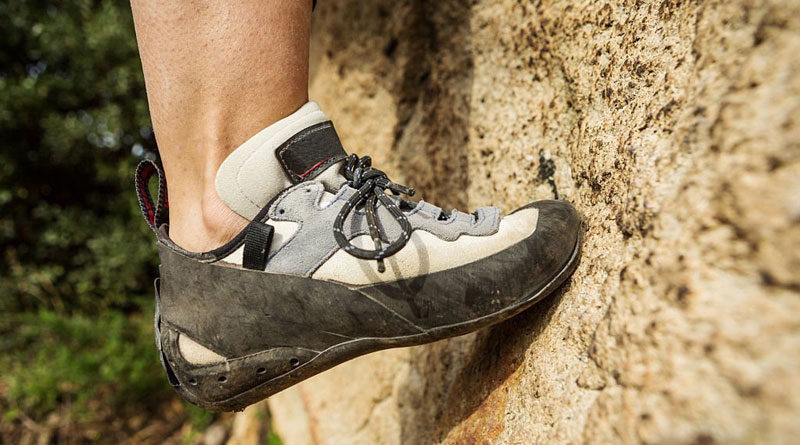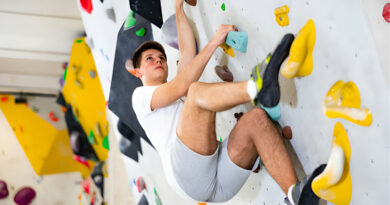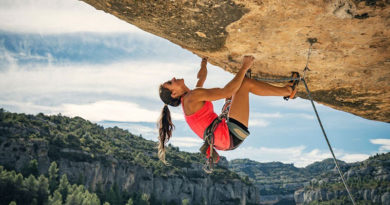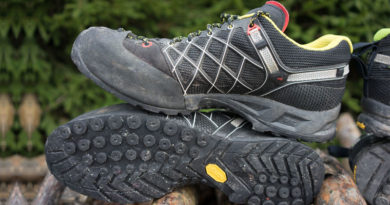How Curled Should Toes Be In Climbing Shoes?
The degree of curl in climbing shoes varies according to the climber’s preferences, experience level, and climbing style. Most climbers like a moderate degree of curl since it allows for adequate power and precision while still giving comfort. For climbers who prefer technical, precise footwork, a more curled toe may be beneficial. This allows for better control and precision on small holds and edges. On the other hand, for climbers who prefer a more aggressive, power-based style, a less curled toe may be preferred. The less curled toes allow for a larger surface area to push against the holds.
The degree of curl in your toes can also be a preference thing. It can be affected by the type of routes you climb and your experience level. It is better to experiment with different degrees of curl in your shoes to determine what works best for you. Also, ensure that your climbing shoes fit comfortably and securely.
What is Curl in Climbing Shoes?
Curl in a climbing shoe refers to the upward bending or arching of the toe box in the shoe. This design feature is meant to give your toes support and control, especially while gripping and pushing on small holds. The degree of curl varies from model to model, with some shoes having a more pronounced curl than others.
The curl in the toe box helps to distribute the pressure evenly across the toes and provides a more solid platform for pushing against holds. It also helps to sustain the shape of the shoe and prevents your toes from falling out when pushing or twisting on holds.
How Much Curl is enough?
This question does not have a one-size-fits-all answer. The amount of curl is a matter of personal preference. It varies according to your climbing style, experience level, and route types.
A moderate degree of curl is ideal for many climbers because it gives a nice combination of support and control. A moderate curl allows the toes to have enough space to grip and pull on holds. With a moderate curl, you also have enough arch support to maintain stability and precision.
However, experienced climbers who prefer technical, precise footwork prefer a more curled toe. On the other hand, climbers who prefer a more aggressive, power-based style prefer a less curled toe.
Factors Affecting the Degree of Curl in Toes
There are several factors that can affect the degree of curl in toes in climbing shoes, including:
Climbing Style
Different climbing styles require varying degrees of toe curl. If you prefer a more technical and precise approach, you will benefit from a curled toe. On the other hand, if you prefer a more aggressive and power-based style, you will benefit from a less curled toe.
Route Type
The type of routes a climber climbs can also influence the appropriate degree of curl. If you typically climb overhanging routes, you will most likely prefer a less curled toe. On the other hand, if you mostly climb vertical or slab routes, you will appreciate a more curled toe.
Experience Level
The degree of curl in your toes can also be affected by your level of experience. More curled toes are preferred by beginner climbers for increased support and stability. On the other hand, less curled toes are preferred by more experienced climbers for more precision and control.
Personal Preference
The amount of curl in the toes is also a matter of individual preference. Some climbers prefer a tighter, more secure fit, while others prefer a more relaxed fit and greater sensitivity.
Advantages and Disadvantages
Advantages of having a moderate degree of curl in toes in climbing shoes:
Support
A moderate degree of curl in the toes supports the feet and helps to distribute pressure evenly across the toes. It also reduces the risk of injury. This support becomes even more critical if you usually push yourself to limits and put a lot of stress on your feet.
Control
The curled toe can also aid in grip and control on small holds. It allows you to stay balanced and make precise movements.
Comfort
Many climbers find that a moderate degree of curl in the toes provides a comfortable fit. This is because it allows for enough space in the toe box to prevent the toes from feeling cramped or uncomfortable.
Disadvantages of having a moderate degree of curl in toes in climbing shoes:
Limited Sensitivity
A moderate degree of toe curl can reduce your sensitivity and feel for the holds. This makes it more difficult to find and grip small holds.
Lack of Power
A moderate amount of curl also reduces the surface area available for pushing against holds. This makes it more difficult to generate power and maximum force.
Curl vs. Downturn
Keep in mind that downturn and curl are not the same in climbing shoes. While related, they refer to slightly different aspects of the shape of the climbing shoe.
Curl refers to the upward bend of the toe box of the climbing shoe. It affects the amount of space available for the toes and the level of support and control the shoe provides.
The downturn, on the other hand, refers to the overall downward bend or shape of the toe box. It affects the angle at which the shoe contacts the holds. It can also impact your ability to perform on overhanging or steep routes.
Shoes with a more downturned toe are generally intended for steep, overhanging routes. Shoes with a less downturned toe, on the other hand, are better suited for vertical or slab climbing.




